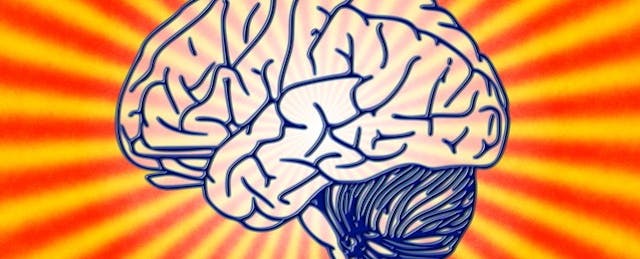From yesterday’s one-room schoolhouse to today’s virtual classroom, from high school campuses that look like small towns to the desks of home school students, the driving questions in education remain the same.
How do students best learn? How do teachers best teach?
As a former high school physics, chemistry and math teacher, parent of three children and technology and learning director and educational consultant, answering those questions has been my life’s work for over 20 years both in and out of the classroom. My passion is to help teachers incorporate strategies, methods and technology tools that foster student engagement and learning. Further, I help students understand how they learn and empower them to take control over their learning.
In my work, I’ve found that research about the brain can catalyze our understanding of how students learn and how teachers, in response, should mobilize.
1. Encouragement Makes a Difference
First and foremost, teachers have a tremendous impact on student learning. If the student thinks the teacher likes or cares about him and the student thinks the teacher believes in him and his abilities, then achievement improves.
Conversely, if a teacher expresses a lack of confidence in the ability of the student, learning declines dramatically and failure becomes a self-fulfilling prophecy. There is science behind it: When students feel positive about their learning environment, endorphins are released in the brain. Endorphins produce a feeling of euphoria and stimulate the frontal lobes, thereby making the learning experience more pleasurable and successful [1]. It is critical that teachers provide a positive, safe, nurturing environment.
2. Brain Plasticity: “Use It Or Lose It”
Research has also concluded that the brain is a “use it or lose it” organ. This is good news for learners of all ages: With activity and use, neural circuits grow and re-wire. Neuro-pathways and connections become stronger and information is stored and retained. It can also be more readily retrieved. Neuroscientists call this process brain plasticity [2]. If students constantly memorize facts then their rote memory pathways will get stronger. If we provide opportunities for students to think, analyze and problem solve, students become more adept at critical thinking.
Examples of programs that I’ve found that foster critical and computational thinking include Scratch, Hyperscore, Alice, Turtle Art, and apps such as Tynker, Cargo-Bot and Hopscotch.
3. Mix it Up: Multifaceted Instruction
Learning is also increased and retrieval is made easier when different types of memory pathways are incorporated when teaching. The brain needs multifaceted experiences such as multisensory input, scaffolding on previous learning, stories and reciprocal teaching [3]. Technology can be incorporated in a multitude of ways by teachers and students, such as creating screencasts using Screencast-O-Matic, designing video lessons with Knowmia and designing mind maps with Mindmeister.
In addition to auditory and visual strategies, kinesthetic pathways should be activated as well. Take the app Coaches Eye, for example; Coaches Eye can be used to capture video with slow-motion review, drawing tools and peer sharing to teach agility drills.
4. Make it Relevant: Project-Based Learning
Another key component to teaching and learning is relevancy. How many times have you heard it said (or said yourself), “When will I ever need to know this in the future?” If the learning experience is designed to solve a real-world, meaningful problem, the information is more likely to make it to long term memory.
In project-based learning, students reinforce executive function skills such as goal setting, managing a timeline, brainstorming solutions, collaborating, revising and presenting to a public audience. Creating an innovative final project using technology to demonstrate learning can be accomplished in a variety of ways, including presentations in Prezi, a website in Google Sites, an animated recording in Powtoon, a digital comic book in Toondoo or a video in iMovie. Providing choice for students to demonstrate content mastery in engaging, demonstrative, experiential and relevant ways is a critical component to successful learning.
5. Use Time Effectively, and Remember to Reflect
Adding a component of reflection to the learning experience will yield tremendous gains as well. When students are given an opportunity to simply think about, or reflect on, what they have just taken in, learning is deepened and memory consolidation improved. Students can email Exit slips (readwritethink.org), post a blog post, write journal entries in Microsoft Word, OneNote, Evernote, Google Docs or even summarize and post their thoughts on Padlet.
Finally, time considerations are important. The average attention span of a child is 10 to 20 minutes, so any learning experience should change person, place or topic according to that timeframe. I have bookmarked the free online-stopwatch.com on my toolbar to remind me to change activities.
As a final note, positive environment, brain plasticity, multi-faceted instruction, real world connections, reflection and attention span are only a few of the many brain-based factors that teachers can incorporate into lesson design. Intentional planning on the front end can make a tremendous difference in the classroom.
NOTE: This article is part of EdSurge's Fifty States Initiative (representing the state of Georgia).
[1] Tokuhama-Espinosa, T. “Mind, Brain & Education Science”, Mary Institute and St. Louis Country Day School, Saint Louis, MO. 13 June 2012. Workshop.
[2] Willis, Judy. (2006), Research-Based Strategies to Ignite Student Learning. Alexandria, VA: ASCD
[3] Sprenger, M. (2010), Brain-based teaching in the digital age. Alexandria, VA: ASCD.


